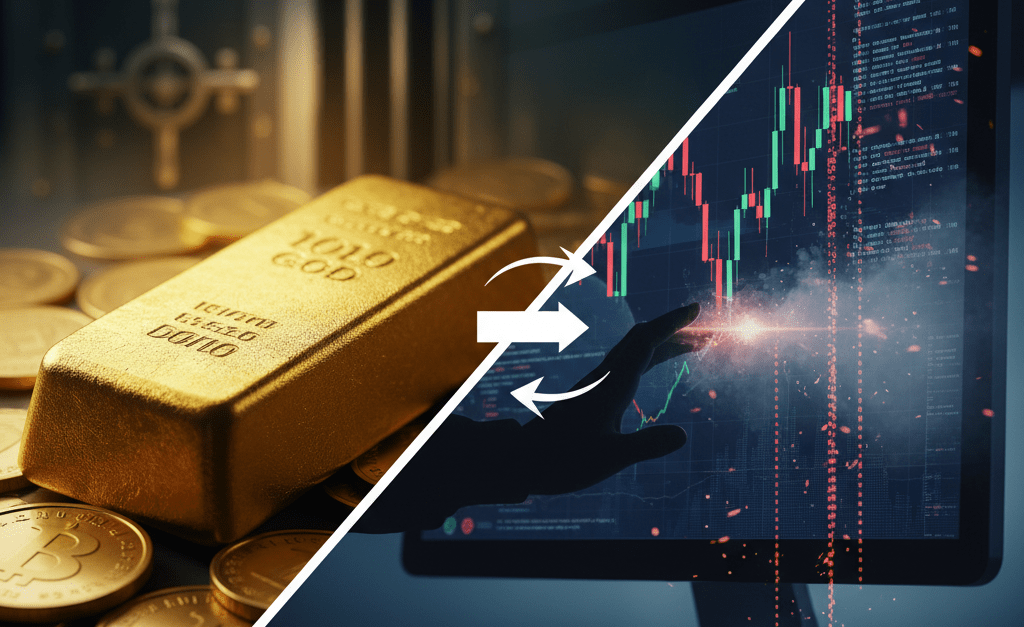The financial market is experiencing an unprecedented shake-up. Gold futures surpassed $4,200 per ounce, setting a new all-time high this Tuesday. This event coincides with a massive cryptocurrency capital outflow of over $21 billion from the Binance exchange alone in the past week, according to data from CoinGlass. This movement reflects a clear risk aversion from investors ahead of key economic reports from the Federal Reserve.
The hard data shows a striking divergence. While gold reached its milestone, closing the session at $4,197.6 according to CME Group, the crypto market was suffering the consequences of a turbulent week. The massive outflows from Binance add to the liquidation of over $19 billion in leveraged futures positions during the recent crypto “Black Friday.” The liquidation of leveraged positions in risky assets has been a decisive factor in the recent drop, which took Bitcoin from a high of $126,000 to briefly fall below $110,000.
Gold Fever and the Crypto Exodus: Figures That Alarm the Market
The current context is crucial to understanding this phenomenon. The capital rotation towards gold is seen by analysts as a “flight to safety.” According to Charles d’Haussy, CEO of the dYdX Foundation, gold’s record indicates “acute risk aversion amid trade turmoil.” Conversely, the cryptocurrency capital outflow shows a retreat from more volatile assets. Investors are de-risking ahead of the Federal Reserve’s Beige Book, a key report on the health of the U.S. economy.
This shift in sentiment is temporary but significant. Shawn Young, chief analyst at MEXC Research, described it as a “flight-to-safety rotation rather than a deep structural unwind.” The expectation is that markets are on pause, waiting for signals about future interest rate decisions. A report pointing to an economic cooling could lead the Fed to adopt a more dovish stance, which would readjust investment strategies across the board.
Beyond Volatility: Is Gold the True Safe Haven?
This situation highlights the classic debate over safe-haven assets. Gold, with its millennia-long history, has reaffirmed its role as a protector of capital in times of uncertainty. Meanwhile, Bitcoin and the crypto market, despite the “digital gold” narrative, have shown a high correlation with risk assets. The massive cryptocurrency capital outflow underscores that, when faced with fear, large capital still prefers the proven safety of the precious metal.
The short-term future will largely depend on macroeconomic signals. The release of the Beige Book and the next FOMC meeting will be decisive. If uncertainty persists, gold could continue its upward trend. Meanwhile, the crypto sector will need to demonstrate resilience and wait for risk appetite to return to the markets. Investors are watching to see if this is a temporary readjustment or the beginning of a more prolonged divergence between traditional and digital assets.

